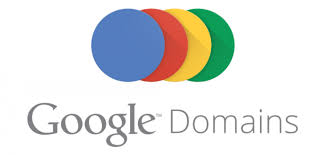Zombieload patch dramatically slows down Intel Based Chromebooks
December 5, 2019
WordPress 5.5 Update breaks many backend plugins
August 15, 2020How to enable remote working for your company

This weekend was a crazy whirlwind of decision and emotion. Last Thursday our State said all meetings with more than 250 people should be postponed due to the Covid-19 virus threat, followed the following day with our local county saying we had our first confirmed resident with the virus, and not to meet in groups larger than 25. The President then saying avoid groups of more than 10. Our immediate concern, we had meetings planned the following Monday evening with upwards of a hundred people. Should we cancel, or rejig them to not have clusters of more than 25 people. Having lived in Italy for five years a decade ago, we were very aware of the current situation there, and the imminent likelihood of us seeing the same here.
Things became clearer over the weekend and the decision to close everything and move online was taken, but this also brought up other issues: how do you maintain social distancing, without losing social cohesion?
I’m pretty sure that life will be permanently changed by this experience. Businesses are having to work out how to allow people to work from home, or at least away from the office. In the past, it was seen as the brave thing to do, to soldier on when struggling with a cold, even if you inadvertently infect everyone else in the office. That will no longer be acceptable. So, how does life carry on when we can’t be together?
Maintain safety
Computer networks in an office are normally locked down geographically, but not necessarily securely if someone went onsite. The number of employees still using “welcome” for a password or whatever default password was assigned to them when they joined is still worryingly high. Opening up those networks to working from home means they are at the mercy of the weakest password. When opening up networks, use the following guidelines to keep things secure.
- Insist on two-factor authentication for your company online cloud accounts. Move the second factor to a hardware key, like a Yubikey. SMS second factor authentication is suffering from an issue where people pretend to port a phone number to a new telephone provider to take over an account. A hardware key removes that risk.
- Make sure all personal information is in a secure location, not left on laptops. Using VPN’s and Remote Desktop sessions (with two-factor authentication) can keep important data secure. Logout sessions when IP addresses change.
Encourage Collaboration
We’re Google fans. We have been using Google Drive, Docs and Sheets for years, even using Google Drive as our network file storage. As such, all staff have access to all of our resources through their Google account. G Suite offers unparalleled collaboration tools. Several people can edit the same document at the same time. This is incredibly helpful on a work level. It means you don’t need to both be sitting at the same desk to discuss a document, or even in the same country.
Google Hangouts allows video conferencing for up to 25 people. It will automatically focus on whoever is speaking (use the mute button if you’re not, and we suggest using headphones to cut down on feedback), and you have the ability to share your screen with everyone connected. Google has rolled out its Hangouts for Business platform to everyone during this crisis.
Google Drive File Stream is the glue that connects Google Drive to your workstation like a network drive. It intelligently works out what files and folders you’re using and removes others, so you don’t need to synchronize 1000’s of GB’s of data on a small laptop. It also means you can start working in one location and pick the work up elsewhere.
Google Shared (Team) Drives are Google Drive folders that are owned and shared by the organization instead of a person. This makes permissioning easier for an organization and retains the data if that staff member moves on. You can put any file into a Shared Drive folder. If you’re using File Stream – you can even drop large files like Photoshop and Illustrator.
Google Jamboard is a collaborative large screen TV with a built-in webcam and touch screen. Even if you don’t have the Jamboard device, the program is available for Android and IoS devices. I use it with a Chromebook tablet and pen and can cast it to a Chromecast enabled TV. Think of it as an electronic whiteboard. It takes a little getting used to, but you can share your Jamboard with other people who can interact with you. Combine it with hangouts and you can whiteboard at the same time as talk and see each other all from different locations.
Virtualize your desktop
Chrome remote desktop is a utility that can turn your Windows or Mac Desktop into a virtual desktop. You install the application, add a six digit passkey and attach it to your Google account. (You should also set your PC to not go to sleep). Now, from any device connected to that Google account, you can access your desktop. The beauty of this solution is its ease of use. You don’t need to worry about firewall rules, remote desktop settings or usernames and passwords (as these are all handled by your Google Account). Once installed, Chrome Remote Desktop even works before you login, so if your Windows machine runs updates overnight, you won’t be locked out the following day. An office could install this on all of its PCs and have whole departments working online. However, the desktop will be transmitted through the company internet, so there is the chance this could clog the upstream bandwidth if the internet is asymmetrical (faster download speed than upload speed). A company may need to look at temporarily upgrading their internet tier during this crisis.
Take you phone home
Voip phone systems can have their PBX systems installed in the cloud instead of on-premises. That means that you could physically take your phone handset home with you and plug it into your home router and it can exactly as it would if you were in the office. When matched with extension lights, you will be able to determine which of your colleagues are already speaking on their phones and direct calls accordingly. An alternative to this, many phone systems offer a feature called “Follow Me” which allows the call to try calling you on your cell phone. This means your calls can find you at home – without giving the end-user your phone number.
Remote Support
Chrome remote desktop is a wonderful tool for remote support a temporary code can be given to someone to login and fix an issue. An alternative is Teamviewer, this has a personal option which applies when someone is working from home and using their own equipment and allows a technician to login and fix whatever issue is causing problems.
Reach out for help
If this is uncharted territory for you, and you’d like help, please reach out to us? There are a variety of ways we can help. I believe enabling employees to work from home will be the norm for most companies from now on.

